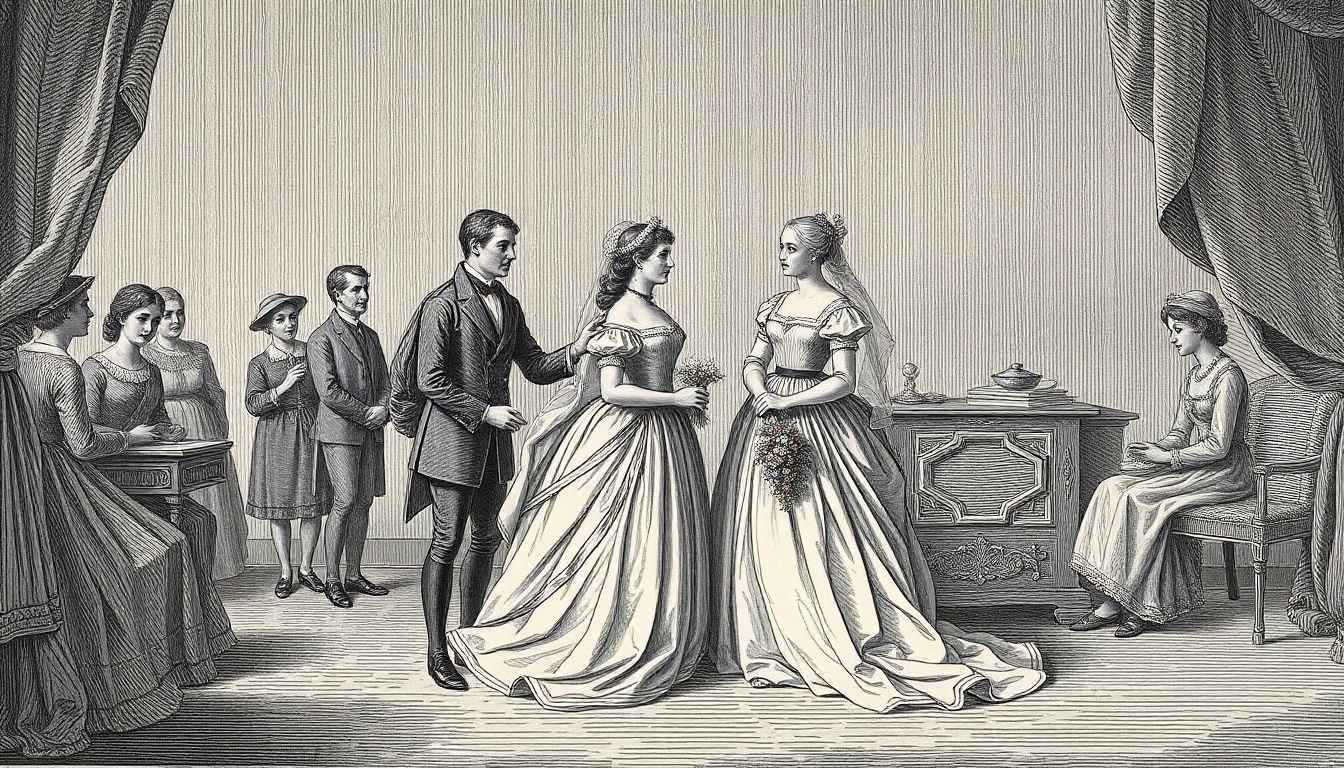Marriage and Social Class in Historical Context
Social Class and Marriage
Marriages were generally made between members of the same social class. Liaisons could occur between lords and peasants, but not marriages.
If there was inequality of class, the norm was for the man to be of the higher class. Women in these circumstances often brought property or money into the marriage.
Age and Economics of Marriage
In the lower classes, economic factors played a major part in determining the age of marriage. In this period:
- Average age: mid-twenties
- Typical man’s age: about 26
- Typical woman’s age: about 24
Death was the main cause of marriages ending. The average marriage lasted about 17 to 19 years.
Spinsterhood and Celibacy
Many re-marriages took place, but a substantial proportion of the population never married. Women spinsters:
- Were most likely to be virgins
- Usually lived with their parents
- Were very unlikely to live separately
Two notable exceptions were the ladies of Llangollen, who maintained an apparently homosexual friendship for years.
Today the concept of spinsterhood is outdated. Many women live single independent lives, though few remain lifelong celibates or virgins. Attitudes toward celibacy changed significantly with the widespread availability of effective birth control.
18th Century Marriage Norms
Most 18th century marriages were placid and uneventful. The abnormal cases were more likely to be recorded. Notable examples:
- Betty Morris’s clandestine marriage
- Caroline Thurslow’s runaway marriage
Both caused family rifts lasting years, suggesting extraordinary emotional factors beyond mere social pressure.
Matchmaking and Social Codes
Matchmakers performed functions similar to modern marriage bureaux, arranging marriages for practical reasons.
A rigid social code prevented marriage between classes. This was particularly enforced in potentially dangerous situations like:
- Music teachers and their pupils
- Young, inexperienced girls seeking romance
- Parents wanting suitable matches for their daughters
Literary Parallel: Les Liaisons Dangereuses
The novel describes a scenario where:
- A schoolgirl completes her education
- Meets her music master (first male acquaintance)
- Is simultaneously being matched with a rich older man
- Chaos ensues
The Richard Stevens Case
The Jeffery family likely feared such a scenario when Richard Stevens (of ordinary background) fell in love with Anna-Maria (of higher social standing).
This case is remarkable because:
- Stevens’ love survived over a decade of discouragement
- His faithfulness ultimately won acceptance
- Their late marriage (after age 40) produced a child
We begin our examination with the story of Betty Morris.
